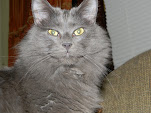I have not always been a fan of nonfiction books. I find them to be boring and tedious and when I read I like to lose myself in the story and fiction does that better, IMHO. But I have recently gotten on a bit of a nonfiction binge, where I will read a nonfiction book or two and then go back to fiction for a while. And since I do not always like nonfiction, I am picky about what I read, so when I see a recommendation somewhere for a nonfiction book, I tend to like having these ideas from others. (I like fiction book recommendations as well, but nonfiction is where I struggle finding books most of the time.) I saw this recommendation, on a big blog that I read, about this nonfiction book, Train Go Sorry: Inside a Deaf World and I knew I wanted to read it. First, it sounded like an interesting and easy read and two, I have an interest in deaf culture and I thought this might be a good book to read to get an insiders view of the world of people who are deaf. I was right on both accounts. This is a fascinating story of life inside the Lexington School for the Deaf. The author, Leah Hager Cohen, spent much of her life living in and around the Lexington School. Although she is hearing, Cohen's father was the principal and then the superintendent of the Lexington School which means she was around the deaf community for much of her growing up years.. She mentions at the beginning of the book that for some of her early years she lived on the grounds of the Lexington School and so was, at least marginally, involved in the deaf culture from birth. Cohen goes back to the school as an adult and acts as an observer to be able to tell the story of this school and by extension a part of the deaf community. She highlights two students, James and Sofia, who are both seniors at the Lexington School, each of whom has their own personal struggles. Sofia immigrated with her family from the former Soviet Union to the United States. She had been to a school for the deaf in Russia and so had learned Russian and a form of sign language, so when she was attending the Lexington School she had to learn English and American Sign Language (ASL). She also became interested in having a Bat Mitzvah, even though she was about 5 years older than the traditional age for this coming of age ceremony. Since she was going to have to read from the Torah, Sofia also had to learn Hebrew in addition to ASL and English.
James is a African-American male who lives in a rougher part of New York City and initially struggled with tardiness and absenteeism when he first entered the Lexington School. The Lexington School finally realizes that the best solution to this problem is to allow James to stay in the residential dorms on the school campus that are now rarely used. James' bother was in jail while the book was being written and James said that if he had not been deaf and gone to the Lexington School he also might have ended up in a gang. James struggles with trying to find his way as an individual surrounded by an urban culture that does not value school and learning and also as someone who needs to learn in order for him to be able to make it in a hearing world. Both Sofia and James are success stories in the book, each of them finds their way on to the next chapter of life with both of them going to an institution of higher learning.
Cohen also intercedes with chapters about her paternal grandfather and grandmother, who were both deaf. She discusses what it was like for them to have traveled from the Old Country, both of them were from the former Soviet Union, and their own struggles as individuals who are deaf. She discusses her father and how he went from living in a household parented by two deaf individuals where he learned ASL to the point at which he kind of stumbled upon the job as an administrator at the Lexington School, where his father had attended. Cohen discusses some of the current issues in the deaf community, at least they were current in 1994 when the book was published and some of them still are very much issues, such as what she refers to as mainstreaming and is now called inclusion to cochlear implants to the rise of deaf pride and how these issues affect the deaf community and deaf culture.
Cohen provides the reader an insight into deaf culture that is rarely seen, or at least I have never really seen it before. She presents the issues that currently plague the deaf culture as it struggles to define itself in a hearing world. Although, Cohen is not always unbiased in her opinions about the larger issues, she does a magnificent job presenting the individual stories with no external opinions and allows each individual to present their own thoughts, feelings and ideas for themselves.
Although I got this book from the local library (yay local libraries), this is one book that I may have to buy at some point as it seems as though it would be a valuable book to read and re-read every so often.
Subscribe to:
Post Comments (Atom)



1 comment:
sounds like a VERY interesting book!
Boxer's mom
Post a Comment